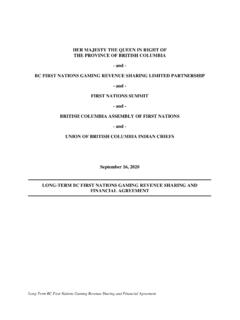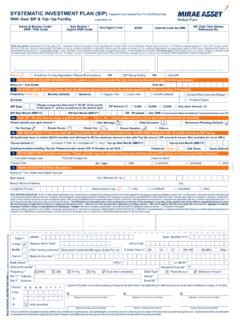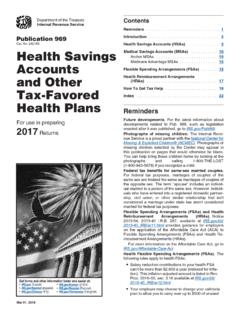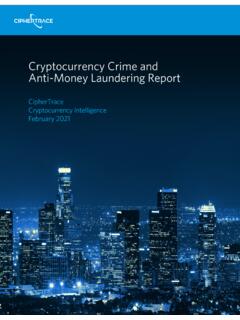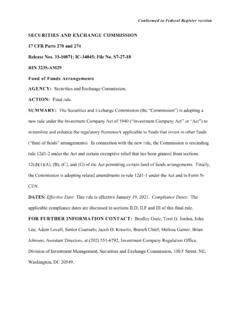Transcription of CAC/COSP/2021/CRP
1 CAC/COSP/2021 * 10 December 2021 English only (E) *2109407* Ninth session Sharm El-Sheikh, Egypt, 13 17 December 2021 * GlobE Network: Background and outcomes of the 1st meeting including the Charter Background One of the main purposes of the United Nations Convention against Corruption is to promote, facilitate and support international cooperation and technical assistance in the prevention of and fight against corruption, including in asset recovery. The Conference of the States Parties to the Convention has repeatedly called for enhanced measures to further promote, facilitate and support international cooperation and technical assistance in the prevention of and fight against corruption.
2 The GlobE Network was established in 2021 under the auspices of UNODC to facilitate informal cooperation and to address the lack of a truly global network for anti-corruption law enforcement authorities. Pursuant to the political declaration adopted by the General Assembly at its special session against corruption, the GlobE Network aims at providing a quick, agile and efficient tool for facilitating transnational cooperation in combating corruption and strengthening communication exchange and peer learning between anti-corruption law enforcement authorities. The GlobE Network is designed to complement and coordinate with existing networks and to ensure mutual support and synergies.
3 The proposal for the GlobE Network was originally conceived under the presidency of Saudi Arabia of the G20 in 2020, in the form of the Riyadh initiative for enhancing international anti-corruption law enforcement cooperation, which was welcomed by the G20 Anti-Corruption Ministerial Meeting held on 22 October 2020 and the G20 Leaders Summit held on 21 and 22 November 2020. Process of establishing the Network In order to prepare for the establishment of the GlobE Network, UNODC convened an online meeting of experts on 3 and 4 March 2021, which brought together over 130 technical experts and participants from 53 States from the five regional groups of the United Nations and 21 international organizations and entities.
4 The participants proposed establishing different interim task forces to advise on various components of the Network. Pursuant to the proposal made at that meeting, UNODC invited States, through the five regional groups of the United Nations, to nominate experts and representatives of relevant international organizations and networks, as well as renowned individual experts, to participate in the three interim task forces: (a) Interim Task Force 1, on _____ * Reissued for technical reasons on 15 December 2021. CAC/COSP/2021 2/2 set-up and operations of the GlobE Network; (b) Interim Task Force 2, on synergies with other existing networks and platforms; and (c) Interim Task Force 3, on tools and services of the Network.
5 The interim task forces were composed of 90 experts from 28 States and 13 international organizations, networks and entities, and held 16 meetings in April and May 2021 to discuss an array of issues relating to the establishment of the Network. The three interim task forces produced different outputs, including: (a) key elements for the charter of the GlobE Network (Interim Task Force1); (b) mapping chart for the membership of different networks, recommendations for enhancing synergies between the Network and existing networks (Interim Task Force2) and the initial structure of the Decision Tree (joint product with Interim Task Force 3); and (c) initial concepts for the one-stop hub, the secure communication platform, the development of knowledge products and the deployment of rapid capacity development.
6 A road map towards the establishment of the Network was also developed. It contained the Network s framework, which included its principal elements and provided the basis for joining and further developing the Network. All these documents can be accessed on the GlobE Network website Launch and membership drive On 3 June 2021, the GlobE Network was officially launched at a high-level side event on the margins of the special session of the General Assembly against corruption. The launch of the Network marked the culmination of intensive work undertaken by experts from all regional groups of the United Nations and relevant international organizations and networks, as well as individual experts from around the world.
7 Based on the road map, on 5 July 2021, the Secretariat sent to States parties a note verbale inviting specialized authorities falling under article 36 of the Convention to join the Network. The Network, which is open to Anti-Corruption Law Enforcement Authorities of Member States of the United Nations and States Parties to the United Nations Convention against Corruption, has grown rapidly since its launch. As of 7 December 2021, it counts 79 member authorities from 47 States. First meeting The GlobE Network held its first meeting from 15 to 17 November 2021 in Vienna. 125 participants joined the open session on the first day of the meeting while 74 experts from 43 authorities from 38 different States participated in the deliberations during the closed session which was restricted to GlobE member authorities.
8 In addition to general awareness raising, particularly during the open session, the objectives of the first meeting were to (1) provide an opportunity for authorities to meet, connect and build a Network owned by its members; (2) adopt and establish the governance structure of the Network; (3) chart out the next steps and delivery road map for: (a) ensuring synergies with other networks; and (b) developing the tools and services of the network (one-stop hub, help-desk, knowledge and capacity-building). Discussions during this meeting led to an agreement on the GlobE Charter and to the establishment of the GlobE governance structure to ensure that the Network s activities directly reflect the on-the-ground realities of the members themselves.
9 Spain and the Kingdom of Saudi Arabia were selected as the Chair and Vice-Chair of the Network, with authorities from Chile, China, Mauritius, Mexico, Morocco, Nigeria, North Macedonia, the Republic of Korea, Romania, the Russian Federation, the State of Palestine, the United States of America, and Zimbabwe chosen as the other members of the Steering Committee. Other proposals arising from the meeting, such as proposals on reducing duplication and enhancing synergies with other networks, establishment of the One-Stop-Hub, including the Secure Communication Platform and Decision Tree, and establishment of a Help Desk and other Sub-Groups to advise on different aspects of the GlobE Network would be further submitted to the Steering Committee for its consideration.
10 Charter of The GlobE Network 2 Content Preamble .. 3 SECTION I: GENERAL PROVISIONS .. 4 Paragraph 1: Definitions .. 4 SECTION II: ESTABLISHMENT OF THE NETWORK .. 5 Paragraph 2: Introduction .. 5 Paragraph 3: Name .. 5 SECTION III: VISION, AIM AND OBJECTIVES .. 5 Paragraph 4: Vision .. 5 Paragraph 5: Aim .. 5 Paragraph 6: Objectives .. 5 SECTION IV: MEMBERSHIP OF THE NETWORK .. 6 Paragraph 7: Membership criteria and process .. 6 SECTION V: ORGANISATIONAL STRUCTURE .. 6 Paragraph 8: 6 Sub-Section I: The Plenary .. 7 Paragraph 9: Composition, Participation and Decision-making Process .. 7 Paragraph 10: Responsibilities of the Plenary .. 7 Sub-Section II: The Steering Committee.










